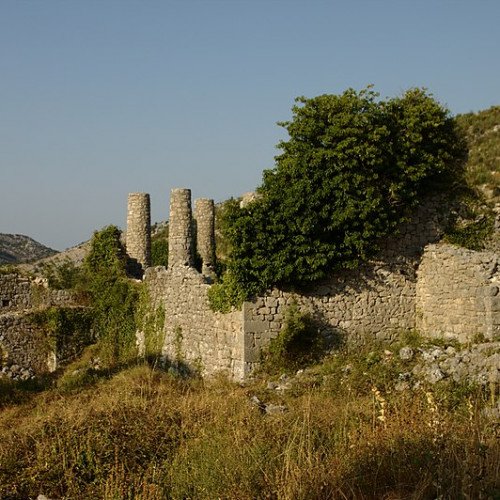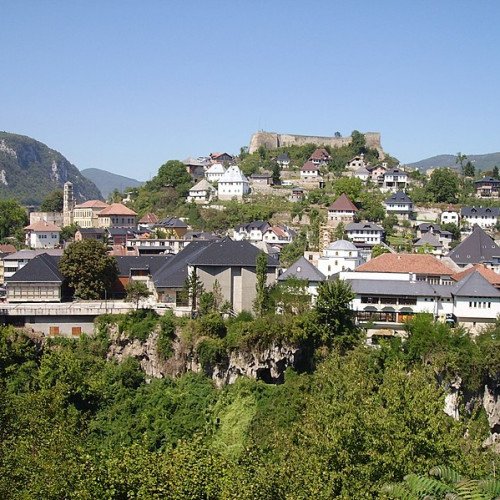Castles of "Bosnia and Herzegovina" HUTOVO FORTRESS vs JAJCE CASTLE

HUTOVO FORTRESS
Hutovo fortress or Hadžibegov Grad (the Hajji bey fort), also Hutovski Grad, is a fortress in Bosnia and Herzegovina in the municipality of Neum near the village of Hutovo. The fortress is located along a narrow road leading from Hutovo Blato to Neum, below Žaba mountain and southwest of Hutovo. Strategically situated atop a hill overlooking the Prešjeci pass, it was often traversed by salt caravans from Ston traveling inland. The name Hadžibegov Grad is derived from the last lord's name, Hadžibeg Rizvanbegović. The structure forms an irregular pentagon.There is a total of nine towers, each in a corner of the fortress. Solid and high walls enclose an area of flat land. The fortification runs east to west 70 m. The eastern portion of the fortress is roughly 50 m in width, while the western portion is 30 m in width. Its walls were constructed in such a way that soldiers armed with firearms could defend every angle of the fortress.
Statistics for this Xoptio

JAJCE CASTLE
The Walled City of Jajce (Bosnian, Croatian and Serbian: Jajačka tvrđava, Serbian Cyrillic: Јајачка тврђава) is a medieval fortified nucleus of Jajce in Bosnia and Herzegovina, with citadel high above town on top of pyramidal-shaped steep hill, enclosed with approximately 1,300 metres (4,300 ft) long defensive walls,. It is one of the best preserved fortified capitals of the Bosnian Kingdom, the last stronghold before the kingdom dissolved under the pressure of military advancement at the onset of Ottoman Empire takeover. The entire complex of the Walled city of Jajce, with the citadel, city ramparts, watchtower Medvjed-kula, and two main city gate-towers lies on the southern slope of a large rocky pyramid at the confluence of the rivers Pliva and Vrbas, enclosed by these rivers from the south-southwest, with the bed of the Pliva, and east-southeast by the river Vrbas gorge. The altitude at the fortress is 470 meters a.s.l, at Pliva Lakes 426.6 meters, and at the waterfall 362.5 meters a.s.l. The fortress which later became a citadel and the focal point of the system of fortifications, and the ramparts combined length stretch in a perimeter of about 1,300 metres (4,300 ft) and covers an area of roughly 11,200 square metres (121,000 sq ft). The whole area is geographically and historically interesting.